#UPRR
Explore tagged Tumblr posts
Text
V&TRR 18 Dayton & UP 4466 Steam Engine Get Moved Around On Roundtable At CALIFORNIA STATE RAILROAD MUSEUM
youtube
#california state railroad museum#csrm#sacramento#old town#roundhouse#turntable#virginia&truckee#v&trr#union pacific#uprr#sp#amtrak#Youtube
3 notes
·
View notes
Text
TUNNEL #29
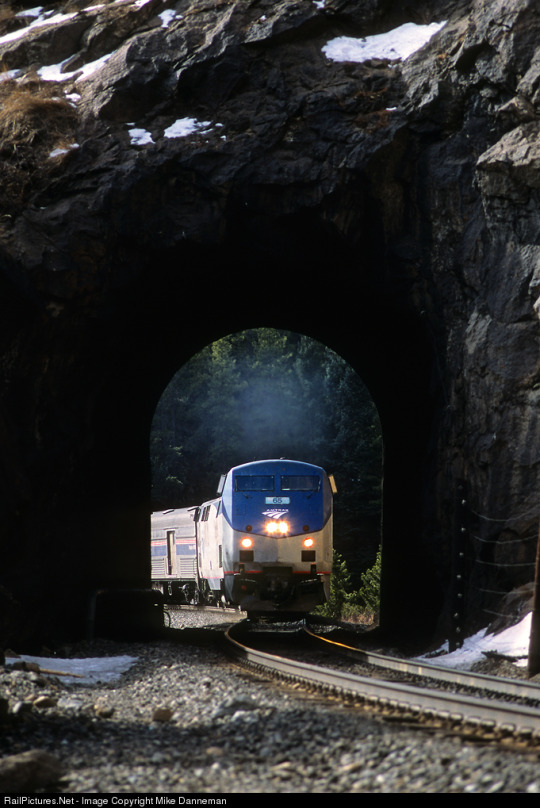
Looking at some random downloads, realized a common theme was that Tunnel #29 is The. Cutest. Tunnel.

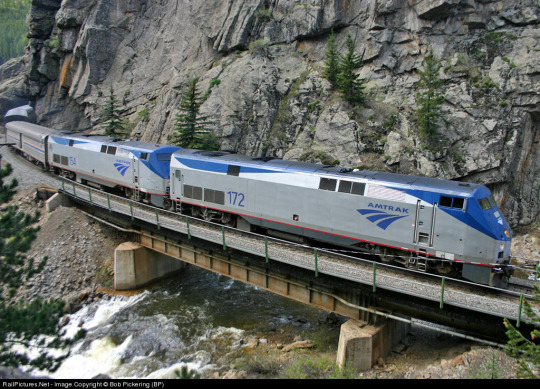

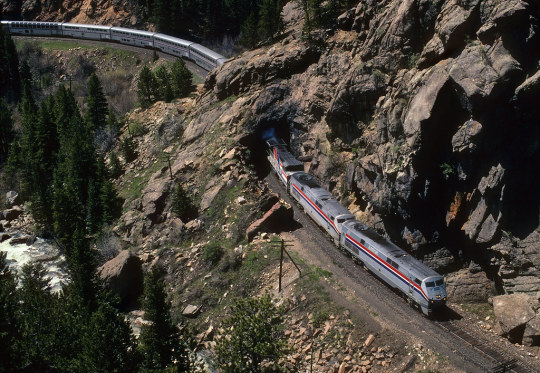
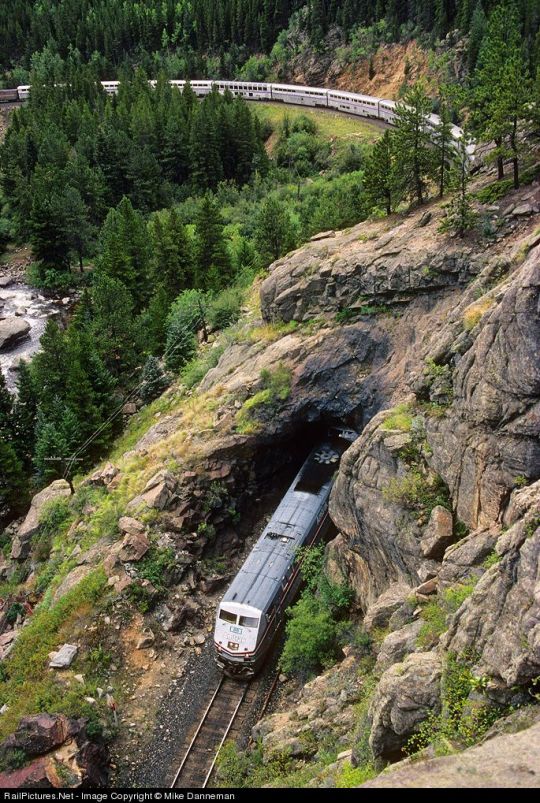
The 2% grade from Denver up to the Moffat Tunnel crawls through South Bend Canyon (along South Bend Creek) with superfluous tunnels and a surfeit of sharp curves, thanks to the mandate of then-Chief Engineer H.A. Sumneso who surveyed the Moffat Route's well-nicknamed "tunnel district" at bountiful π/1 ratio of rail to "as the crow flies" distance as he tried every trick not to make it steeper than 2%
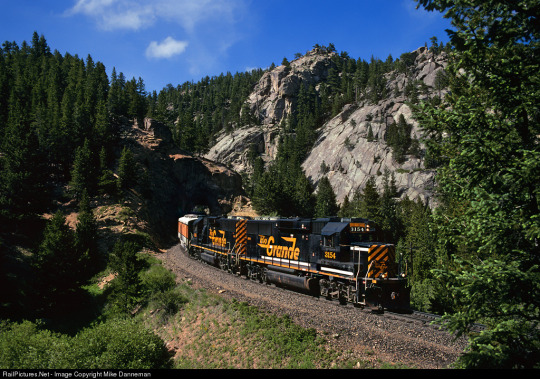
A blasted rock bore barely 78 feet in length, tight-clearance Tunnel 29 on the Moffat Route is at milepost 36.38 and sandwiched between one of Sumneso's super-tight 12° cruves and the "curved bridge with no name" over South Bend Creek (which is officially named "Bridge 36.45" after it's milepost location) The feature on the creek's right bank seems to be locally nicknamed the Gibraltar Cliffs, from whence railfans look down on the tiny trains below.
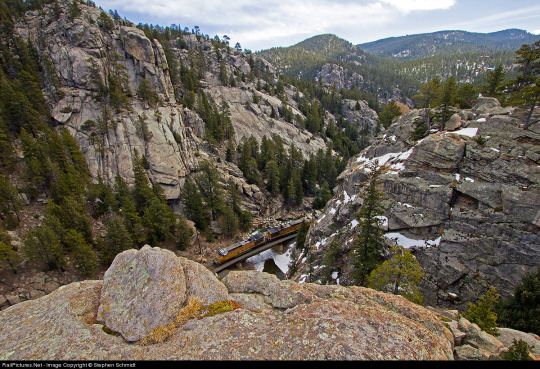
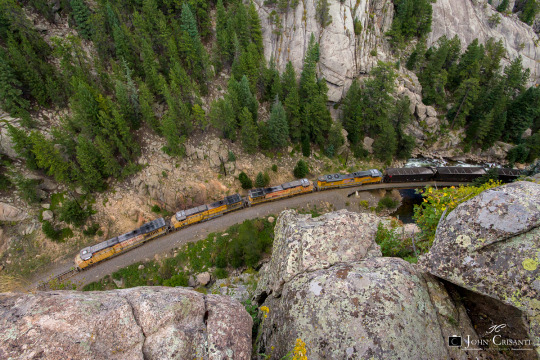
The cutest tunnel? Yep. Did I mention the Ski Train?
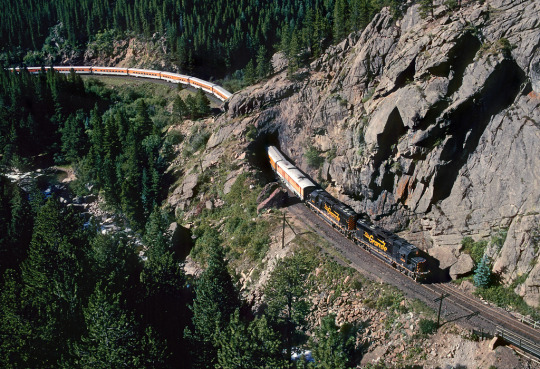
#drgw#tunnel#tunnel 29#uprr#amtrak#railfan#29#absolute fav#cutest tunnel#tunnel portal#rio grande#Colorado#south bend canyon#south bend creek#moffat route#denver and rio grande western#railroad#d&rgw#ski train#calafornia Zephyr#rocky mountain mountaineer#officer special#union pacific#southern pacific#bnsf#up#etc#S#ess curve
40 notes
·
View notes
Text

Rumbling pass Roy Station, Union Pacific AC44CW No. 7221 and ES44AC No. 7520 (built originally as an AC6000CW) have left Ogden and are proceeding South with a train of grain hoppers. Although off camera, AC44CW No. 6331 (Ex-Southern Pacific 218) is at the back of the train serving as a DPU unit.
Taken on 11/22/23
Picture C) Me
#UP#UPRR#Union Pacific#Union Pacific Railroad#AC44CW#7221#ES44AC#7520#6331#General Electric#GE#GE Locomotive#Diesel Locomotive#Freight Train#Train#Railfanning
9 notes
·
View notes
Text
McKeen and Harriman sketched this up on a napkin together, and part of the reason for so many unique features is that Harriman and McKeen were doing a little bit of self dealing, and were in the porthole business together, with a patent monopoly! (Hence the port holes...)



Harriman's personal venture profited from every single car he ordered his railroads to purchase of course, so the biggest criticism of the McKeen cars is that they were too expensive (they were). Harriman used the cars to replace some entire passenger trains as a justification to shareholders for the expense. _

Rory Litwin 1905 McKeen Railmotor.The McKeen Railmotor was a 6-cylinder self-propelled railcar or railmotor.
When McKeen Company of Omaha, Nebraska, U.S.A., first unveiled the car in 1905, the McKeen was among the first engines with a distillate-fueled motor.
259 notes
·
View notes
Text
Check out this and other scale model stuff at my eBay store.
3 notes
·
View notes
Text
Reciben estudiantes de la Universidad Politécnica de la Región Ribereña taller para emprendedores
Reciben estudiantes de la Universidad Politécnica de la Región Ribereña taller para emprendedores
Miguel Alemán, Tamaulipas.-La subsecretaria para la Pequeña y Mediana Empresa de la Secretaría de Economía del Gobierno del Estado, Mariana Álvarez Quero, impartió a estudiantes de la Universidad Politécnica de la Región Ribereña (UPRR), el taller “Encuentro de Emprendedores Universitarios”. Durante el encuentro con las y los universitarios, la funcionaria les ofreció herramientas y…
0 notes
Photo
Classic! I think I had a Daylight Sales tee with that as a design.
Edit this one

Sunset Limited, The Streamliner, and Super Chief

As part of the celebration of Los Angeles Union Passenger Terminal’s 50th Anniversary, cab units from the three original tennant railroads were posted next to each other to recreate a popular PR / postcard photo from the pre-Amtrak days. From left to right are Southern Pacific E9A 6051, Union Pacific E9A 951 and Santa Fe F7A 347C on May 6, 1989. The SP and ATSF diesels are owned by the California State Railroad Museum, and the UP’s E-unit is part of that road’s historic fleet. (via RailPictures.Net Photo: SP 6051 Southern Pacific Railroad EMD E9(A) at Los Angeles, California by Craig Walker)
20 notes
·
View notes
Text
Conmemoraron estudiantes de la Universidad Politécnica de la Región Ribereña “Día Mundial de la Educación Ambiental”
Conmemoraron estudiantes de la Universidad Politécnica de la Región Ribereña “Día Mundial de la Educación Ambiental” Carlos Figueroa MIGUEL ALEMÁN, Tam., 02 de febrero .— Estudiantes que integran el Grupo de Ecología de la Universidad Politécnica de la Región Ribereña (UPRR), con apoyo del biólogo Virgilio García Jiménez, encargado del vivero municipal de Miguel Alemán y su equipo de trabajo,…

View On WordPress
0 notes
Text
Tehachapi Loop Trip Part 1 1998
youtube
#tehachapi loop#bnsf#uprr#california#railfan#dvd#railfanning#bob rivard#soo line#sp#atsf#1998#Youtube
3 notes
·
View notes
Text

Patrick Dirden "ANPMI at Martinez" It's been a long day for the crew of the ANPMI (North Platte to Milpitas, CA Autos). Between delays at the Roseville Yard, detouring trains at Haggin Junction, and broken down train in Benicia, the crew is running against the clock. The crew had to wait for a disabled intermodal train to clear before finishing it's switching duties at the Automobile facility in Benicia. The crew also had to assist the disabled train. These delays pushed a usually easy run from Roseville to Milpitas into a rough run. The train, passing Martinez, finally called it quits in Oakland, and had a patch crew take it the remainder of the way to Milpitas. https://flic.kr/p/SprcEF
6 notes
·
View notes
Text
Just so you understand nuclear health physics, the 3 major pathways, and the distribution of radioactive materials throughout the body: Radioactivity plays the positive the role as both allowing the creation of life and evolution on any planet. Radioactivity also plays the negative role from its misuse in the Poisoning of the Planet as the nearly only cause for proven cancers —not links, not % chance, not statistical! If it is put in a pathway into the body, which it is, be it known there are 72 trillion possible cancers all caused from radioactivity. And now with gene spicing and viral vaccine use, one must now add multipliers to the 72 trillion!
There are over 250 radiological isotopes, with many thousands more more created by our technology.
So what did Russia develop? Maybe 1 blocker of trillions?
Remember an old adage: Do not play with fire, and these fires are odorless, tasteless, and invisible.
Best one learn of the about radioactivity, pathways, and the fact that many of these isotopes travel to every organ in the body. Everyone.
Are you sure you are ready to play in the “Cancer Games”?
THE CANCER GAMES:
May the odds be forever in your favor!
But your odds of surviving drop significantly if:
>You live in Radioactive City, Pocatello Idaho,
>You eat food produced with Radioactive Fertilizers (Radioactive Foods).
>You live anywhere in Southeastern Idaho’s 140,000 square miles of Phosphate/Uranium fields.
>You drink waters from any stream or water source contaminated by processed uranium materials stored all across the western USA on the UPRR (Union Pacific Rail Road) that leaches into every water crossing.
Enjoy all the fine food we provide for you.
Florida is now the major producer of Radioactive Fertilizers in the USA. Idaho is scared they will go to jail for killing and destroying millions of people and children’s lives.
For starters and just due compensation, we strongly suggest you prosecute Idaho Politicians for Child Abuse, and Endangerment!
#Congress4IdahoLaw
#cancer
#LivingWithUranium
#radioactivefertilizers
#radioactivefoods
#poisoningofamerica



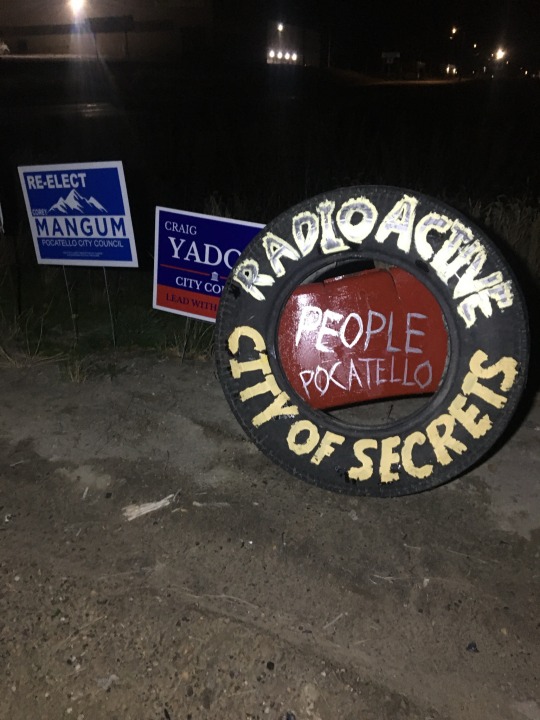

0 notes
Video
youtube
UPRR Geneva Sub Ho scale model railroad tour de chooch 2024
0 notes
Video
Mile Post 24.23 por Carlton Holls Por Flickr: A westbound Union Pacific freight train rolls past the campus of Wheaton College on a snowy Saturday at Mile Post 24.23 of the UPRR Geneva Subdivision. Nikon D5100, Tamron 18-270, ISO 400, f/5.0, 50mm, 1/1000s
1 note
·
View note
Text
UPRR and COPD
After many years of constant exposure to dangerous chemicals I have COPD.

View On WordPress
0 notes

